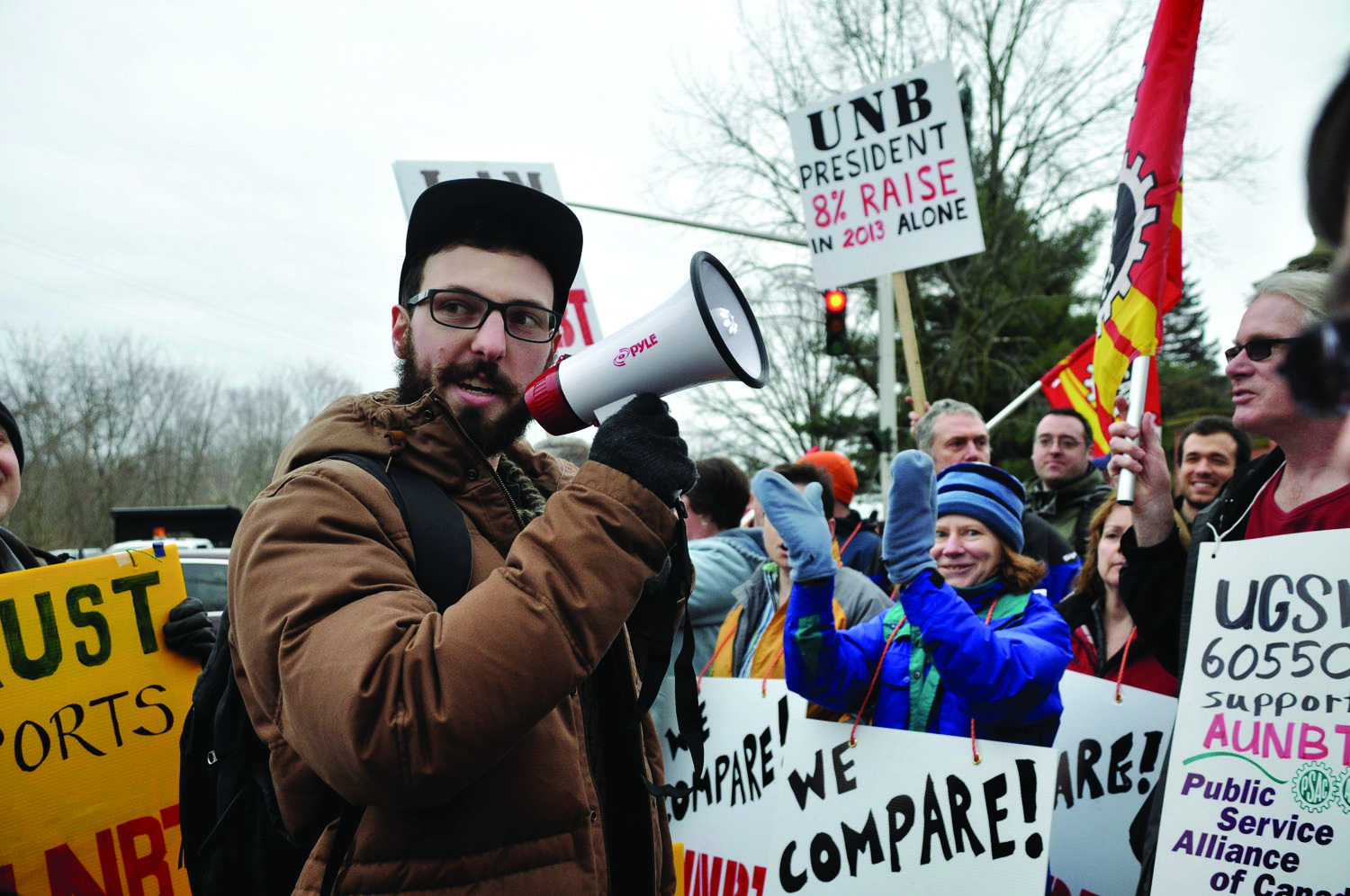Classes at the University of New Brunswick (UNB) resumed yesterday after more than two weeks of faculty strikes. This development, following a long period of deadlock in negotiations, comes as welcome news to many UNB students who were worried about falling behind on their coursework, and frustrated with their wasted tuition. The bigger problem with the handling of this situation, however, is the half-baked, government-brokered settlement that ended the strike.
Professors at UNB, whose salary averages lag behind those of professors in many other Canadian universities, were seeking a 20 per cent increase in pay over the next four years. The university believed this sum to be unworkable within the limits of their budget. The strike that ensued left over 10,000 students with cancelled classes, and resulted in widespread dissatisfaction among the student body, with some students even taking to the streets in protest. Nevertheless, both parties remained in a deadlock.
On day 15 of the strike, the government demanded that both sides resume bargaining talks, and appointed a third-party mediator to advance negotiations. The teachers’ union stood opposed to government intervention, maintaining that government involvement would interfere with their right to collective bargaining. According to a CBC article, the union believed that, “A third-party resolution would get us all back to class, but would interfere with our members’ legal rights, could have negative long-term effects, and would not resolve underlying problems.”
Fast-forward two days, and the mediated negotiations have already resulted in an agreement. The settlement accorded the faculty a 2.5 per cent increase each year for two years. This amount is significantly less than their original demands and lower, still, than the proposed 9.5 per cent increase that the university had put on the table before the mediated negotiations began.
The government’s intervention in the strike clearly expedited the bargaining process, and students will now be able to resume classes without further delays. However, the agreement that was reached with the help of the mediator seems more like a quick fix, and less like a real solution that will truly satisfy both parties. If the issue re-surfaces, we must then wonder if the government’s intervention was the right thing to do.
A panel discussion on the legalization of students’ right to strike held at Concordia University last week revolved around a similar question. When, if ever, is government regulation of university strikes favorable? Panelists generally agreed that engaging the government as a means of legitimizing or mediating strikes limits the power of the labour movement. While legalizing student strikes might seem like a useful way to legitimize the practice, the formalization of such a right will also result in its restriction. The same explanation may be applied to the mediation of the UNB faculty strikes. The involvement of a third party mediator likely required both sides to make concessions that they otherwise wouldn’t have if left to bargain freely.
Collective bargaining is a key tool that union members use to exercise their influence. Government involvement, even if only to mediate discussions, undermines the give and take relationship between union members and employers. Although the process of collective bargaining is often frustrating and characterized by periods of deadlock, it’s the only means for union members to have their requests met. The mediated negotiations allowed classes to resume, but if the professors’ underlying dissatisfaction remains, this artificial peace will prove to be no solution at all.









